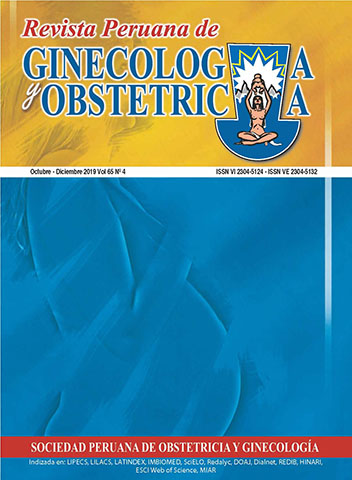Simulation versus conventional exposition in the teaching of severe preeclampsia
DOI:
https://doi.org/10.31403/rpgo.v65i2207Abstract
Objective: To determine if simulation is more effective than conventional exposition in the improvement in nurses’ knowledge of severe preeclampsia. Methods: Crosssectional quasi-experimental study in two private clinics in Cajamarca, Peru. We compared the improvement in nurses’ knowledge of severe preeclampsia: 13 attended to a conventional exposition about severe preeclampsia (Exconv) and 16, the experimental group, had the same exposition and four simulation training sessions (Sim). We conducted a pretest in both groups and a posttest in 20
participants; these were composed of multiple choice questions previously validated by experts; Spearman-Brown reliability was 0.76. The simulation training sessions were recorded in video and evaluated by an expert with a checklist adapted from the American College of Obstetricians and Gynecologists. Data was processed with SPSS 20.0. We used Spearman-Brown correlation tests and Student’s t test for paired samples to compare the scores obtained in pretest and posttest, p <0.05. Results: The control group’s (Exconv) pretest and posttest scores were 11.69 ± 2.53 and 13.85 ± 2.27, p = 0.02, and pedagogical gain was 2.15 ± 2.88. The experimental group’s (Sim) pretest and posttest scores were 10.25 ± 2.79 and 14.69 ± 1.89, with a pedagogical gain of 4.44 ± 2.22, p = 0.000. The pedagogical gain of the experimental group was greater than that of the control group, p = 0.002. Conclusions: Greater improvement in knowledge was obtained by teaching severe preeclampsia with simulation training sessions than with conventional exposition solely.
















